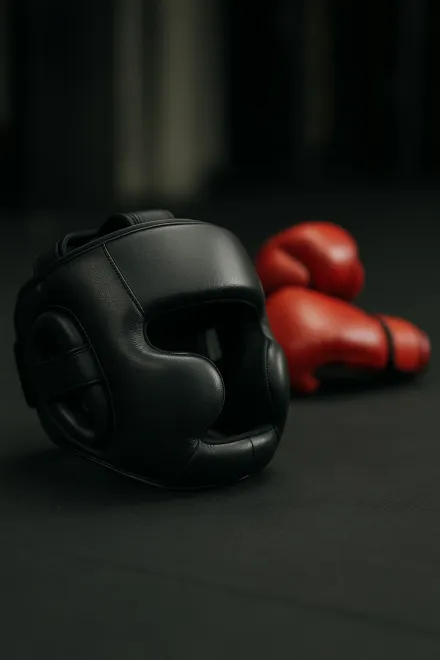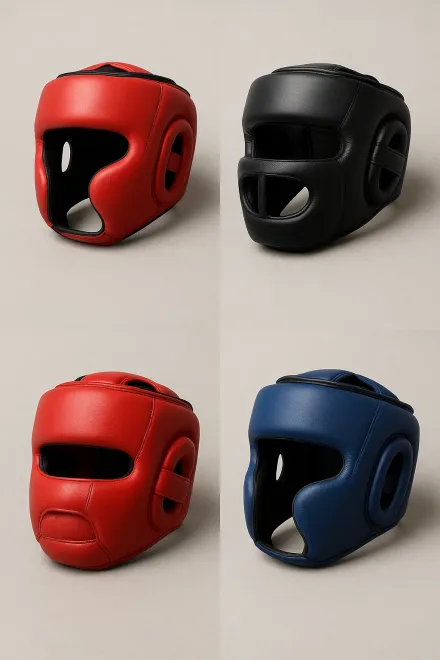Boxing headgear
Boxing headgear is an essential accessory for those who train or compete in this combat sport. It not only protects the head from impacts, but also provides safety and confidence when sparring or stepping into the ring. Choosing good boxing headgear can make the difference between training comfortably and suffering unnecessary discomfort, so it is crucial to know the types, materials, and key features before buying one. In this guide you will find all the information you need to make the right decision.
See boxing headgear on Amazon
Why use boxing headgear?
Using boxing headgear is essential for sparring sessions and some amateur competitions. Its main function is to protect the boxer's head, reducing the risk of cuts, bruises, and serious injuries in sensitive areas such as the jaw, temples, or cheekbones. Although it does not completely eliminate the impact of punches, it does lower the likelihood of external injuries and provides psychological safety, allowing you to train with more confidence. Training without boxing headgear significantly increases the risks, especially for beginners who have not yet mastered defense.
Additionally, boxing headgear is designed to provide a comfortable and stable fit, preventing it from shifting with each blow. Most include adjustable chin and back straps to ensure it stays secure during the fight. Many modern models also feature breathable materials to prevent excessive sweat buildup and improve ventilation.
Therefore, wearing headgear is not only a matter of physical protection, but also a way to enhance your training experience, extend your practice without injuries, and build confidence in every session.
Types of boxing headgear
There are different types of boxing headgear designed according to skill level and type of fight. Knowing them is essential to choose the right model for your needs:
- Open headgear: covers the top of the head but leaves the cheekbones exposed. They are lighter and offer greater visibility, although they protect less of the face.
- Bar headgear: includes a front bar that covers the nose and part of the face. They are ideal for heavy-contact training as they reduce the risk of nasal fractures and cuts.
- Closed headgear: protects much of the face and is common among beginners and in amateur boxing. Their drawback is that they limit peripheral vision slightly.
- Professional headgear: usually lighter, with better padding, and designed for official competitions. They offer a balanced combination of protection and visibility.
The choice of headgear depends on your experience, the type of training you do, and the intensity of the fights. For example, if you do light sparring, open headgear may be enough, while for intense sessions or professional preparation, bar or closed headgear is a better option.


Materials and features to consider
When choosing boxing headgear, materials play a key role in both comfort and durability. Headgear is usually made of genuine or synthetic leather, with genuine leather being more resistant but also more expensive. Synthetic leather models offer good value for money and are suitable for regular training.
Another important aspect is the padding. It should be thick enough to absorb impacts but not so rigid that it becomes uncomfortable. High-density foam padding is one of the most recommended options.
Breathability is also important. Many modern headgear designs incorporate non-slip inner linings and fabrics that promote ventilation, which helps reduce sweat buildup and improves hygiene.
As for fit, the ideal option includes velcro or lace closures, along with a padded chin strap. A good fit prevents shifting during the fight, which could compromise your safety. Well-fitted headgear should feel firm, but never overly tight.
Tips for choosing the best boxing headgear
Choosing boxing headgear should not be taken lightly. Before buying, it is worth considering a few practical recommendations:
- Define the use: if you want it for light sparring, you won't need the same headgear as someone preparing for intense competitions.
- Check the size: headgear usually comes in S, M, L sizes or adjustable models. Make sure to try it on or review the brand's size chart.
- Look for balance between protection and visibility: very closed headgear protects more, but it can limit your field of vision, affecting your reaction time.
- Prioritize comfort: uncomfortable headgear can distract you and hurt your performance. The inner padding should feel pleasant and not cause excessive pressure.
- Read reviews: checking feedback from other boxers can help you identify common issues, such as poor ventilation or fast wear.
Also, don't forget to consider the brand. Brands like Everlast, Adidas, Venum, or Leone offer high-quality headgear with strong reputations in the boxing world. Investing in good headgear means investing in your safety and in the longevity of your boxing practice.
Care and maintenance of boxing headgear
Well-maintained boxing headgear can last for many years, even with intensive use. To extend its lifespan, it's important to follow a few maintenance tips:
- Regular cleaning: after each training session, wipe the inside with a damp cloth to remove sweat and bacteria. Avoid soaking it to prevent damage to the padding.
- Proper drying: never store headgear in closed spaces immediately after use. Let it air out in a ventilated area to avoid bad odors and mold.
- Use sanitizing sprays: there are specific products that help keep headgear free of bacteria and smelling fresh.
- Avoid sun exposure: extreme heat can damage the leather and deform the padding.
- Periodic checks: ensure that straps, fastenings, and stitching are in good condition. Damaged headgear loses effectiveness and safety.
An extra tip is to have a second headgear if you train very frequently, so you can alternate its use and extend the life of both. Remember, boxing headgear is not just an accessory, it's your main safety ally in the ring.
Frequently asked questions about boxing headgear
Does boxing headgear prevent knockouts?
No, boxing headgear does not prevent knockouts. Its main function is to reduce cuts, superficial blows, and facial injuries. Brain impact still exists since the force of the punch is transmitted through the skull. So, while headgear protects externally, it does not eliminate the risk of concussion. It is important to train moderately and under a coach's supervision.
What is the best boxing headgear size?
The size of boxing headgear depends on your head circumference. Generally, brands offer S, M, L, or adjustable models. A correct size should feel firm, not moving when hit, but without causing excessive pressure. If it is too loose, it will lose effectiveness, and if it is too tight, it can cause discomfort and headaches during training.
Is headgear recommended for every training session?
The use of headgear in boxing depends on the type of training. For sparring sessions, it is highly recommended, since there is an exchange of punches and risk of injury. On the other hand, for bag work or technique drills, it is not necessary, as there is no direct contact with another boxer. However, many beginners prefer to use it in almost every practice to gain confidence.
What is the difference between open and closed boxing headgear?
The main difference is the level of protection. Open headgear offers greater visibility and lightness, ideal for experienced boxers who trust their defense. Closed headgear, on the other hand, protects more of the face and is recommended for beginners or for intense contact training. The choice depends on the balance you want between safety and field of vision.
How to properly clean boxing headgear?
Proper cleaning involves wiping it with a damp cloth after each use to remove sweat and dirt. It should never be submerged in water, as the padding would be damaged. It is advisable to let it dry outdoors and apply specific sanitizing sprays for sports gear. Also, store it in a dry, ventilated place, avoiding direct sunlight.
How long does boxing headgear last?
The lifespan of boxing headgear depends on the material quality and frequency of use. Genuine leather headgear that is well cared for can last several years, while synthetic leather models tend to wear out faster. If you train intensely several times a week, it is advisable to check it annually and replace it when the padding loses firmness or the straps deteriorate.
Can boxing headgear be used in other combat sports?
Yes, many boxing headgear models are also used in disciplines like kickboxing, muay thai, or mixed martial arts, as long as they meet the necessary protection requirements. However, some sports have specific headgear designed for their own rules and strikes. The ideal option is to use certified headgear for the discipline you practice, ensuring maximum protection and comfort.
